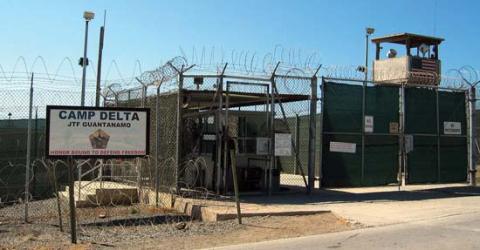Last month, hours before a Senate subcommittee held a hearing on shuttering the Guantanamo Bay detention facility, the White House circulated a two-page document to Congress that contained the administration’s plans for closing the prison.
One reason the White House drafted the document, sources tell me, was to beat back criticism from some members of Congress who have said the reason they have not taken any action on Guantanamo since 2009 is because the White House did not have a comprehensive plan for shutting down the facility.
Daniel Klaidman, the national political correspondent for The Daily Beast and Newsweek, got a hold of the White House’s two-page plan and wrote a report about it a week after the Senate subcommittee hearing under the exaggerated headline, “Obama’s Secret Gitmo Plan.” It’s hardly a “secret” plan, as Klaidman claimed, seeing that the White House distributed the materials so widely. The human rights community also obtained copies of the document.
Still, Klaidman, who did not post a copy of the White House’s plan, an omission that I’m correcting here by publishing the document in full, was right in noting that the document “makes clear that the administration’s vision for closing Gitmo is more like a mirage, one containing many of the political elements that have served to frustrate progress on issue after issue over the past five years.”
Human rights groups I spoke with agreed.
“I think it’s fair to say there’s nothing terribly new in ,” Shane Kadidal, a lawyer with the Center for Constitutional Rights, told me.
Klaidman reported the two-page outline reads more like a plan to keep Guantanamo open:
As for the administration “plan” to close Gitmo, it reads as much like an argument for why the prison can’t be closed anytime soon as a blueprint for the kind of bold action some say would be required to shut down the facility.
Raha Wala, an attorney with Human Rights First told me, “It’s frustrating that the president blames Congress and Congress blames the president and nothing gets done as a result.”
“Even if Congress doesn’t act the executive branch needs to move forward on this,” said Wala, whose organization issued its own Guantanamo closure plan that “is focused on the president continuing to show leadership on this issue at a very high level and lobbying Congress to move forward.”
“We need to convince the administration that they have the power to issue national security waivers and they need to use it” and release the 86 prisoners who have been cleared for release, Wala added, referring to the authority Congress granted President Obama and the Secretary of Defense in the National Defense Authorization Act (NDAA) to waive a certification requirement that prisoners will not engage in terrorism:
“We need to stop viewing the detainee population as a group of dangerous terrorists who as soon as we move them abroad are going to fall under the spell of Al Qaeda in the Arabian Peninsula. Some of these men may very well be innocent. You have a group of hardcore guys there suspected of direct involvement in the 9/11 attacks and the other extreme is people who were wrongfully picked up. With respect to the 86, they were unanimously cleared for release or transfer by two administrations. I would just reinforce the fact we should demand those 86 be transferred out of Guantanamo as quickly as possible.”
The White House’s plan, however, says its ability to issue national security waivers is “significantly limited”:
Current law allows the Secretary of Defense to waive some – but not all – of the transfer restrictions, and even then, imposes alternative restrictions to replace any that are subject to a waiver. As a result, the Administration’s ability to transfer detainees is significantly limited even if the waiver provisions are exercised.
It was the mass hunger strike that began nearly seven months ago that forced President Obama and Congress to revisit Guanatanamo. But with the protest now fading from the headlines Wala and Kadidal now fear closing Guantanamo may be sidelined yet again.
One possible example of a shift in priorities is that three months after his major counterterrorism speech, in which Obama said he would appoint an envoy at the Pentagon to work with a counterpart at the State Department on Guantanamo prisoner transfers, the position still remains vacant. In a major counterterrorism speech in May, Army Lt. Col. Todd Breasseale, a Pentagon spokesman, told me, “The Department has nothing yet to announce on this issue.”
This article was written by Jason Leopold and published by The Public Record on August 25, 2013

